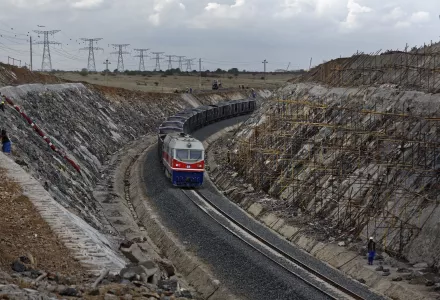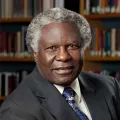
The Emergence, Evolution, and Impact of Institutional Innovation
Introduction
Africa is a continent of an apparent paradox. On the one hand, it is endowed with abundant natural resources that have defined its image and place in the global economy. But on the other hand, it consists of some of the poorest nations on earth. One would assume that, given the circumstances, newly independent African states would have aggressively sought to uplift their economic performance and improve the wellbeing of their people through adding value to their natural resources. Yet proposals for resource-led industrial transformation were not developed until much later in the evolution of Africa’s economic integration.
It is often argued that African countries with small markets should instead focus on exporting raw materials and using the revenue to import manufactured goods. But right from the beginning, African decolonization champions focused not so much on the material wealth of the continent, but on its political unification as a prerequisite for economic transformation. This outlook is engraved on the plinth of Ghana’s first president, Kwame Nkrumah, outside Parliament House in Accra: “Seek ye first the political kingdom and all other things shall be added unto you.” With its biblical derivation, the injunction has come to play an equally spiritual role in African political affairs. Underlying this vision was a deep commitment to the ideology of Pan-Africanism.
The first major indication that Africa was taking regional economic integration seriously came with the adoption of the Tripartite Free Trade Area (TFTA) Agreement in June 2015 in Egypt. The agreement covers 26 nations with a population of 720 million people and GDP of US$1.3 trillion. It covers the Common Market for Eastern and Southern Africa (COMESA), the East African Community (EAC), and the Southern African Development Community (SADC) economic communities. The area of the TFTA is nearly twice the size of China or the United States, spanning 16.7 million square km. The Agreement promises to do for the continent’s economic freedom what the formation of the Organisation for African Unity (OAU) in May 1963 did for Africa’s decolonization and political freedom. The agreement signalled the possibility of achieving wider continental integration. Negotiations for the creation of the Continental Free Trade Area (CFTA) were launched immediately following the signing of the TFTA. It will cover more than a billion people in 55 countries with a combined GDP of over US$3.5 trillion.
The power of Pan-Africanism as a guiding vision for the continent’s development is widely studied, mostly as an aspirational phenomenon. At worst, Pan-Africanism has often been seen as a poor imitation of American federalism or European integration. Both of these perceptions do not reflect the profound nature of the role that the ideology of Pan-Africanism played in shaping the continent’s economic transformation.
African leaders initially envisioned the creation of a unified continent. But this was not possible until all of Africa was free from colonial rule. Colonialism left behind a legacy of national economies that largely supplied the industrialized world with raw materials. Efforts to obtain better trading terms through international trade negotiations paid little dividends. The pressure to respond to the needs of a growing population created the need to look to regional markets. But these same markets faced limitations such as poor infrastructure, trade barriers, and long-standing competition
driven by uncertainties in the global trading systems. The route of political integration as a prerequisite for economic cooperation did not seem feasible despite a few isolated efforts.
This paper provides an alternative explanation of the emergence and evolution of regional economic integration by focusing on institutional innovation. The paper is divided into five sections. The first section provides background analysis of the forces that shaped Africa’s early efforts to search for new approaches for economic transformation. This is followed by an elaboration of the theoretical basis for understanding how Africa sought new models of economic order from the post-World War II chaos.
The section builds on the theoretical foundations outlined to explain the behavior of systems that operate far from equilibrium and under conditions of uncertainty. Section 3 explores how the far-from-equilibrium dynamics led to the emergence of a variety of novel institutional arrangements aimed at governing regional integration. Section 4 explains how Africa has charted its own novel approach that combines the strengthening of state capacity with the expansion of complex economic networks to foster economic integration. Here we outline how Africa’s emerging regional integration approaches radically differ from those adopted in other regions. The last section examines Africa’s long-run economic outlook, with emphasis on a 50-year vision that is guided by the need for inclusive growth and sustainable development transitions.
Juma, Calestous and Francis Mangeni. “African Regional Economic Integration.” Belfer Center for Science and International Affairs, Harvard Kennedy School, Winter 2018




